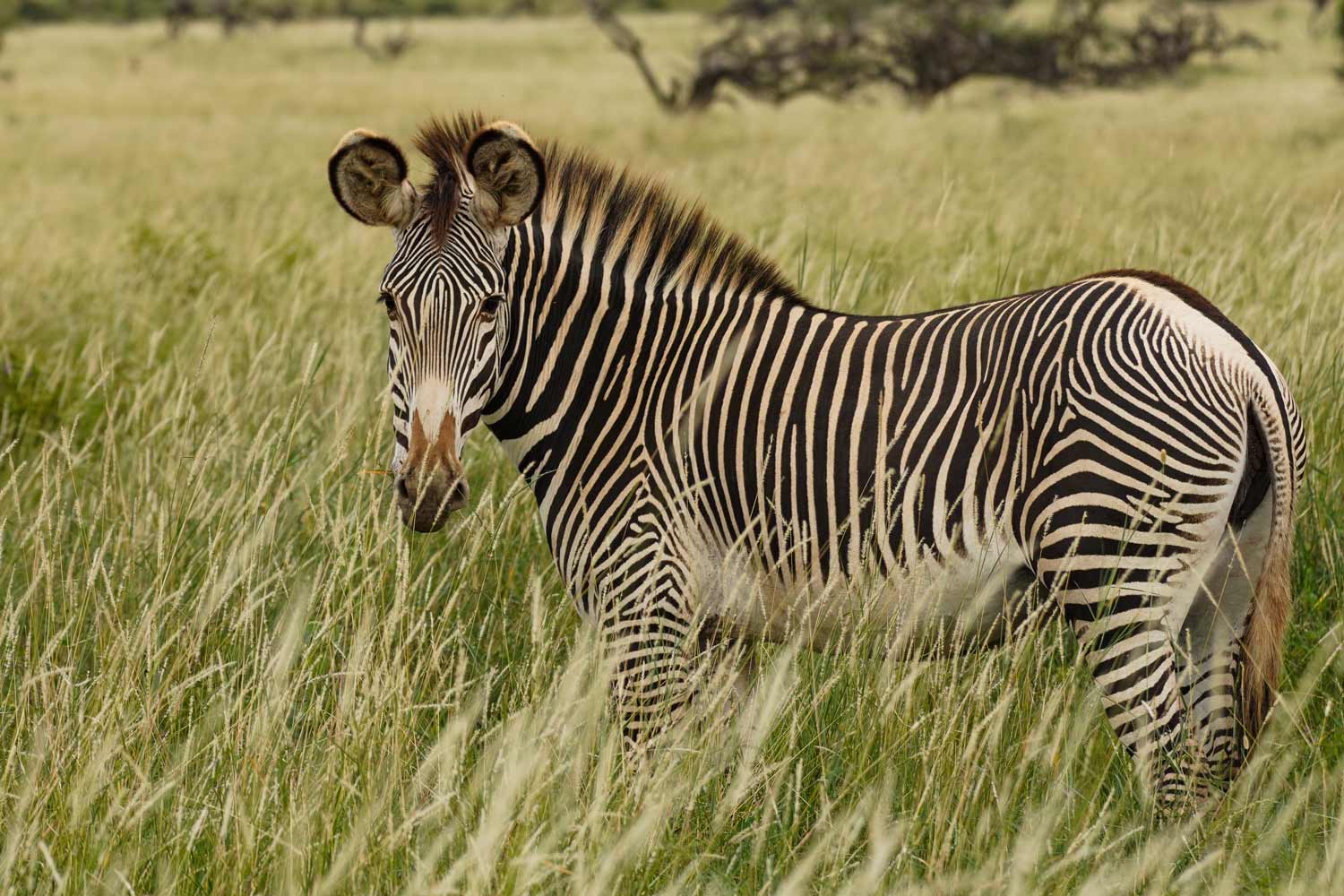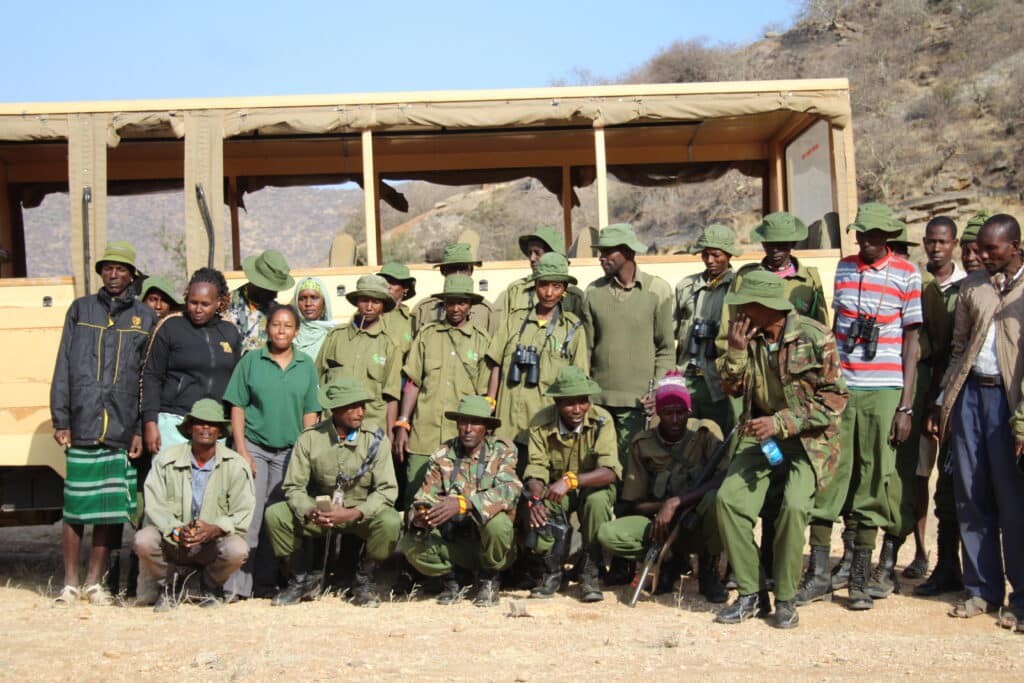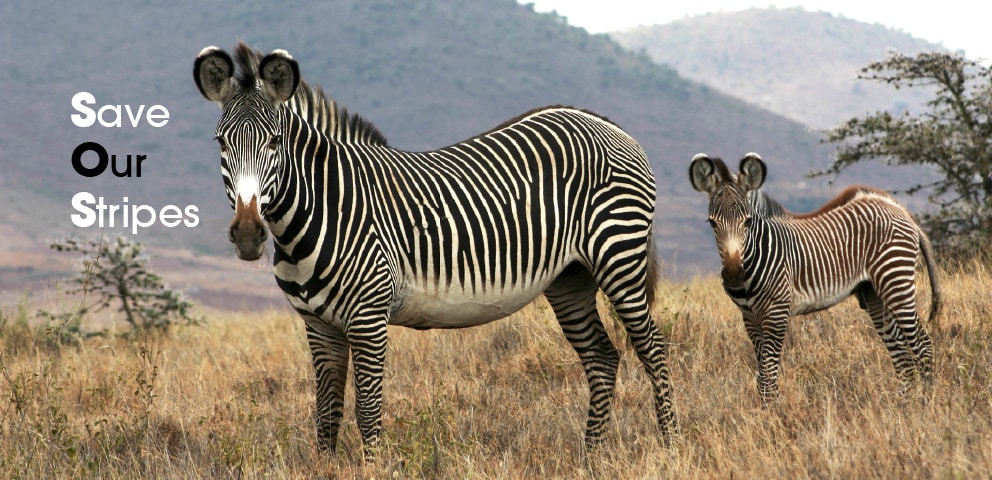Save our Stripes: Why our ‘matchmaking mission’ is vital to protect Grevy’s zebra
April 27, 2025
April 27, 2025

The Grevy’s zebra is one of Africa’s rarest mammals, and this beautiful species desperately needs our help!
With fewer than 3,000 left in the wild, these animals are facing threats such as habitat loss, drought, competition with livestock, and hunting as well as countrywide infrastructure developments. But thankfully, there are people like Tanya Langenhorst who’ve dedicated their careers to making sure they don’t disappear.
Tanya is Grevy’s Zebra Programme Lead here at Marwell and she’s been looking after these beautiful animals for nearly 25 years. She manages their International Studbook and acts as the European breeding coordinator.
A studbook is a detailed family tree for animals in zoos. It records the animals birth and death, who their parents are, any babies they may have and movement between zoos. For species like the Grevy’s zebra, it helps keep track of genetics so breeding can be managed carefully and the population stays healthy.

Tanya manages all the Grevy’s zebra in European zoos, there are 51 in total. Nine zoos in the UK have Grevy’s zebra and Marwell Wildlife is the only one in the UK to home all three zebra species.
“My work is a bit like operating a dating agency!,” says Tanya.
“I analyse how each zebra is related to all others in the population, which ones are overrepresented or underrepresented in the gene pool, and then I recommend which animals should breed with whom and where or be moved. Sometimes zebras might also need to be moved because a zoo is at capacity, or the animals don’t get along, or the zebras are at an age when they shouldn’t or can’t breed anymore. I even take travel distance into account, as we don’t want zebras spending days on the road.”
All this is tracked through a system called ZIMS, the Zoological Information Management System. It’s where Tanya gets updates from zoos across the world and where she uploads all details like post-mortem reports, birth dates and more.
In addition to managing the studbook, Tanya is a vital link between zoo-based conservation and efforts on the ground in northern Kenya, where we run a long-term zebra monitoring and conservation programme. Tanya recently got back from a trip where she caught up with our local team of conservationists and scouts.
“We’ve got a programme manager, field coordinator, three field assistants and 24 scouts working out there. The scouts are out every day tracking Grevy’s zebra with GPS-enabled phones and camera traps. They report back on details like where they are, what they are doing, if there is an increase or reduction in poaching and how much rain has been falling. That data gets sent to our colleagues in Nairobi for analysis.”

The scouts come from local communities, and the project is just as much about helping people as it is about helping zebras. Scouts receive literacy and numeracy training so they can accurately record data using smartphones. Many have never attended school or had formal education before, but they are keen to learn new skills.
“In some of the communities, they don’t count numbers like we do. They’ll say ‘a small group of zebras’ or ‘a large group’, but not exactly how many. For conservation, we need the details, so we’re helping them learn and they’re doing brilliantly.”
We support the wider community by installing solar panels or building water troughs that can be used by the locals and shared with wildlife and livestock. We have also helped scouts create bank accounts and signed them up to a health service, so they can access hospital treatment if they need it. There’s a real focus on involving women – six of the scouts are women, providing vital income and purpose in a culture where women traditionally don’t have paid work.
As a founding member of the Grevy’s Zebra Technical Committee in Kenya, Marwell helps oversee everything from national surveys to drought response and disease outbreaks. When there was an anthrax outbreak in 2006, Tanya and her team helped raise the money for an emergency vaccination campaign, with support from zoos around the world.
During Kenya’s worst drought in 40 years, we stepped in to feed zebras with hay and nutritional supplements, sometimes feeding up to 500 Grevy’s zebras a day. The effort was massive, and expensive. But thanks to support and donations from zoos across Europe and North America, the feeding programme kept going.
“It’s not something conservationists do lightly – feeding wild animals – but with so few Grevy’s zebra left, every single one matters. If we lose pregnant females or foals, that’s an entire year of new life lost. The population can’t take that.”

Our ‘Save Our Stripes’ campaign, part of this year’s Big Give, is urging the public to donate to our efforts to save the Grevy’s Zebra. Every pound given via the Big Green Match Fund will be doubled from 22 to 29 April 2025, with that funding going directly to protecting the species in the wild.
“Grevy’s zebra are not only part of the biodiversity of Kenya, they are a symbol of the country and connected to the people that live there,” says Tanya. “They are also such beautiful and impressive animals that live in an incredibly harsh environment, and we need to protect them.”